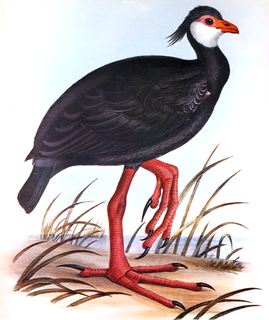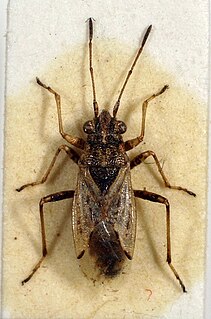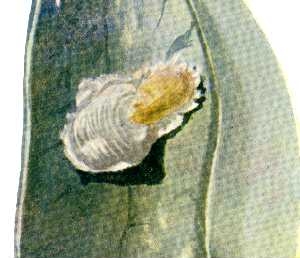
George Robert Gray FRS was an English zoologist and author, and head of the ornithological section of the British Museum, now the Natural History Museum, in London for forty-one years. He was the younger brother of the zoologist John Edward Gray and the son of the botanist Samuel Frederick Gray.

Francis Walker was an English entomologist. He was born in Southgate, London, on 31 July 1809 and died at Wanstead, England on 5 October 1874. He was one of the most prolific authors in entomology, and stirred controversy during his later life as his publications resulted in a huge number of junior synonyms.

Nysius is a genus of false chinch bugs in the family Lygaeidae. At least 100 described species are placed in Nysius.

Deraeocoris is a genus of plant bugs in the family Miridae. There are at least 210 described species in Deraeocoris.

Hebrus is a genus of velvet water bugs in the family Hebridae. There are at least 160 described species in Hebrus.
John Stuart Noyes is a Welsh entomologist.
Saissetia coffeae, known generally as hemispherical scale, is a species of soft scale insect in the family Coccidae. Other common names include the helmet scale and coffee brown scale.

Lepidosaphes is a genus of scales and mealybugs in the family Diaspididae. There are at least 150 described species in Lepidosaphes.
Pinnaspis strachani is a species of armored scale insect in the family Diaspididae.

Pulvinaria psidii, is a species of soft scale insect in the family Coccidae.

Pseudococcus longispinus, the long-tailed mealybug, is a species of mealybug in the family Pseudococcidae.
Hemiberlesia lataniae, the latania or palm scale, is a species of armored scale insect in the family Diaspididae. It was first described by the French entomologist Victor Antoine Signoret in 1869 using Latania lontaroides, a species of palm tree endemic to Réunion as its host; since then, it has been found on avocado trees growing in South Africa, Australia, Israel, the United States, and on a range of other plants in many parts of the world.

Antonina graminis or Rhodes grass scale is a species of mealybug in the family Pseudococcidae. In the 1940s the species, originating in Asia, infested nearly 69 species fodder and turf grasses in Texas causing major economic loss. Classical biological control was made use of in the 1950s and 60s with nearly complete control achieved after the aerial introduction of a wingless encyrtid parasite from India, Neodusmetia sangwani. By 1976 the control was a complete success and nearly 17 million USD was estimated as savings due to the parasite.
Ischnaspis longirostris is a species of armored scale insect in the family Diaspididae.
Parlatoria ziziphi is a species of armored scale insect in the family Diaspididae.
Chrysomphalus dictyospermi is a species of armored scale insect in the family Diaspididae.
Parlatoria pergandii is a species of armored scale insect in the family Diaspididae.
Lepidosaphes gloverii is a species of armored scale insect in the family Diaspididae.
Diaspis bromeliae is a species of armored scale insect in the family Diaspididae.

Parasaissetia nigra is a species of soft scale insect in the family Coccidae.










